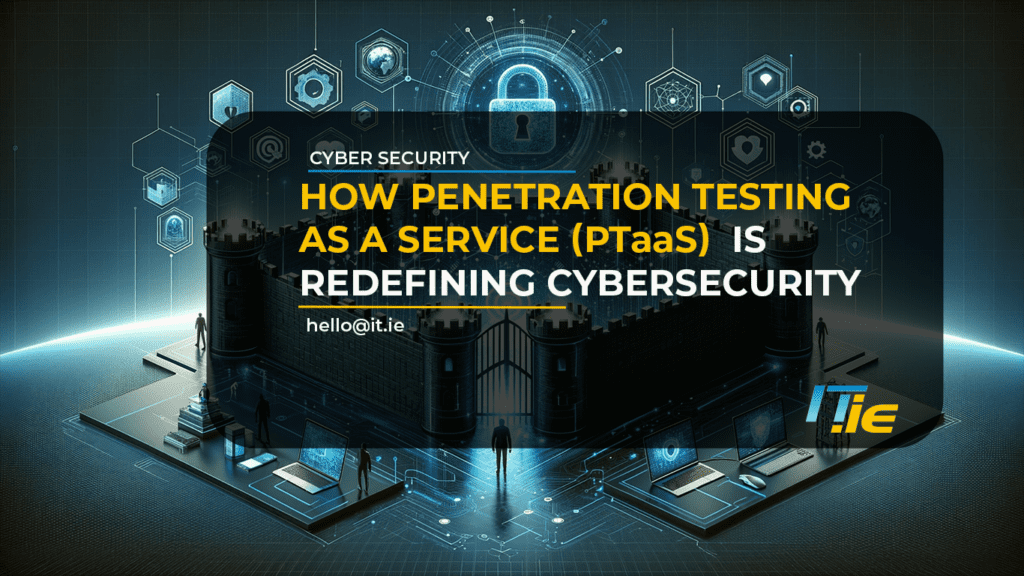In an era where cybersecurity threats evolve with alarming velocity, the importance of robust cyber defence mechanisms cannot be overstated. Penetration Testing, a key part of any cybersecurity strategy, has seen a significant transformation with the emergence of automated Penetration Testing as a Service (PTaaS).
Understanding Penetration Testing
Penetration testing, often referred to as pen testing, is a cybersecurity technique used to evaluate the security of a network. The process involves simulating a cyber-attack against the system to identify vulnerabilities and security weaknesses that a hacker could exploit. The objective is not to cause harm but to uncover security gaps so that they can be fixed before a malicious actor discovers and exploits them. Penetration testing provides valuable insights into the effectiveness of an organisation’s defensive mechanisms and helps in strengthening the security posture against potential threats.
Introducing automated Penetration Testing as a Service (PTaaS)
At the heart of modern cybersecurity strategies lies PTaaS, a streamlined and efficient approach to penetration testing. This automated service offers a meticulous examination of networks, identifying vulnerabilities with precision and agility. Unlike traditional methods that are often time-consuming and labour-intensive, PTaaS employs cutting-edge technology to ensure comprehensive coverage and up-to-the-minute threat detection.
PTaaS vs. Manual Penetration Testing: A Comparative Analysis
Manual penetration testing, while valuable, faces limitations in scalability and consistency. Human error, time constraints, and the evolving complexity of cyber threats pose significant challenges. In contrast, PTaaS brings unparalleled speed, efficiency, and accuracy to the table. Automation allows for regular and thorough assessments, critical in a landscape where threats can emerge overnight.
Advantages of PTaaS
- Comprehensive Coverage: PTaaS systems are designed to probe deeper into the network, uncovering vulnerabilities that manual testing might miss.
- Speed and Efficiency: The automated nature of PTaaS significantly reduces the time required to conduct testing, enabling businesses to conduct more frequent assessments without the added time and labour costs.
- Expertise and Innovation: Leveraging the power of PTaaS means having access to the latest in penetration testing methodologies and technologies, continuously updated to combat new vulnerabilities.
Enhancing Compliance and Facilitating Cyber Insurance with PTaaS
One of the often-overlooked advantages of PTaaS is its role in ensuring compliance with an ever-expanding array of regulatory requirements. For businesses operating within the European Union, adherence to the General Data Protection Regulation (GDPR) is paramount. PTaaS can play a critical role in identifying and mitigating vulnerabilities that could lead to data breaches, thus helping businesses maintain GDPR compliance and avoid hefty fines. Furthermore, industry-specific regulations, such as the Payment Card Industry Data Security Standard (PCI DSS) for payment card data, necessitate rigorous security measures, where PTaaS can provide invaluable insights and assurances.
In addition to compliance, PTaaS is increasingly becoming a cornerstone for businesses seeking cyber insurance. At a time when cyber threats are a significant risk, insurers are more scrupulous in assessing the cybersecurity measures of policy applicants. A comprehensive PTaaS report can serve as evidence of a proactive cybersecurity stance, potentially leading to more favourable insurance terms. Insurers may view businesses that engage in regular, automated penetration testing as lower risk, reflecting in reduced premiums and better coverage options.
Reducing Overall Security Costs with PTaaS
Automated PTaaS can offer significant financial advantages over manual penetration testing. A recent article in BleepingComputer looked at the high cost of manual penetration testing with costs in excess of $20,000 when all costs are considered. Automated testing can reduce cybersecurity costs by streamlining the penetration testing process. PTaaS can offer substantial savings by minimising labour hours and enabling more frequent, thorough testing. This proactive approach not only reduces the risk of costly breaches but also optimises resource allocation, offering a smarter financial pathway for businesses. As part of our commitment to providing value-driven services, we are currently offering PTaaS at a special rate of €100 per public IP per month. That’s €1,200 per annum for 12 separate tests as opposed a significant sum for a single manual test.
A study by the Ponemon Institute highlights that the average cost of a data breach in Europe exceeds €3 million, underscoring the value of preventive measures like PTaaS. Furthermore, a Gartner report predicts that by 2025, 45% of organisations worldwide will have experienced attacks on their software supply chains, a threefold increase from 2021, making the case for automated penetration testing more compelling than ever.
In conclusion, sutomated Penetration Testing as a Service (PTaaS) marks a pivotal shift in cybersecurity practices, blending speed, efficiency, and precision to meet the escalating challenges of cyber threats. Through its capacity to deliver thorough, consistent testing with minimal human intervention, PTaaS not only enhances an organisation’s defensive posture but also aligns with regulatory compliance and optimises financial resources. As cybersecurity landscapes evolve, PTaaS emerges as a cornerstone, equipping businesses with the tools needed to proactively identify and mitigate vulnerabilities.
Find out more about this revolutionary new service from IT.ie at: https://it.ie/penetration-testing/



